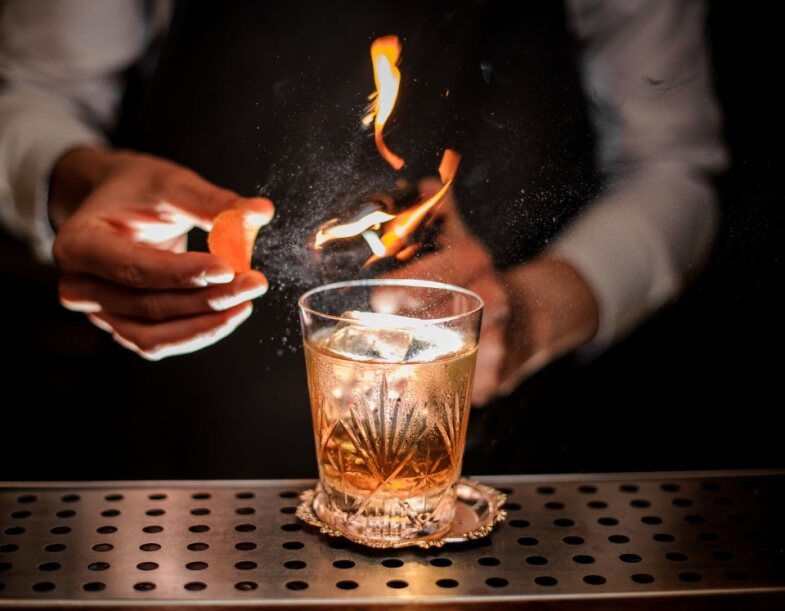
SCOTCH WHISKY
The Scotch story dates back more than 500 years. How is this iconic whisky made, and how can the finished product be enjoyed?
Estimated read time: 2 Minutes
WHERE IT ALL BEGAN
People have been distilling spirits in Scotland for over 500 years. Back then, the spirit produced was referred to as ‘Uisge Beatha’ or ‘the water of life’ as it translates from the Gaelic.
As the centuries went by and distillation methods improved, considerable advances in the creation of the spirit were made. We have monks to thank for spreading their distilling expertise as they moved from monasteries into the communities where they put their skills to use. News of distillation methods soon spread from village to village and some people believed the spirits could be used for a range of things including health, prolonging life, and even in the treatment of smallpox. There is, however, no evidence to suggest the distilled spirits had any health benefits.
The years ticked by and ‘uisge beatha’ became known as whisky. It had become an integral part of life in Scotland and was frequently offered to visitors upon arrival at their destination as a welcoming toast.
A revolution in the Scotch story happened when grain whiskies first started being produced in the 1830s. The blending of these lighter grain whiskies with the more intensely flavoured malt whiskies widened the appeal of Scotch considerably. It was in this arena that a man by the name of John Walker built his reputation for blending whiskies from the four corners of Scotland.
HOW IS SCOTCH WHISKY MADE?
Malting
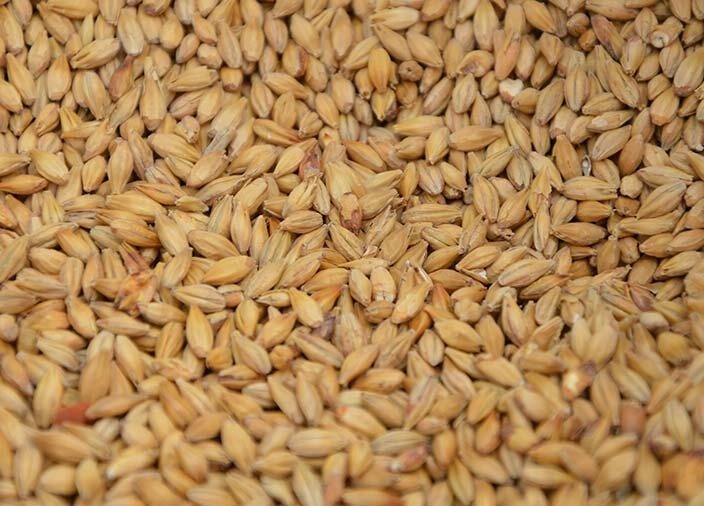
Malting
Barley grains or seeds are soaked in water until they sprout. When the grains have sprouted, they are dried and toasted in a huge oven called a kiln. In traditional Scotch whisky production, the kiln was peat fired which gave Scotch its signature peaty flavor. Different levels of peat smoke are still used today to influence the final smokiness of the whisky, delivering a wide range from heavily peated drams like Caol Ila, to lighter ones less exposed to peat, like Oban. The barley grains that have been dried and toasted are now considered ‘malted’.
Mashing
The malted barley is ground into a coarse powder known as grist. The grist is then mixed with hot water in a vessel called a mash tun. The hot water helps dissolve the sugars from the grist, creating a sugary liquid known as ‘wort’.
Fermentation
The wort is transferred to fermentation vessels (called ’washbacks’), which could be made of wood (e.g. Oregon Pine), stainless steel, cast iron or even concrete. Yeast is added and begins to convert the sugars in the wort into alcohol and carbon dioxide through fermentation. This process usually takes between 48 to more than 100 hours and produces a liquid called "wash" with a low alcohol content of around 8% ABV. The fermentation is key to flavor creation; a shorter fermentation time will typically produce nutty and cereal flavors, while a longer fermentation will produce fruitier flavor.
Distillation

Distillation
The wash is distilled in traditional pot stills or continuous column stills. Pot stills are batch distillation systems that produce a more complex and flavorful spirit, while column stills are used for continuous distillation, resulting in a lighter spirit. Scotch whisky is typically distilled twice, although some single malt Scotch, might be distilled more than twice in pot stills. A notable example is Mortlach which is distilled 2.81 times!
Pot Distillation
A typical double pot distillation will start off in a wash still. The wash is heated, and alcohol vapor rises, carrying with it various compounds. The alcohol vapor is condensed back into liquid form, known as "low wines." This is followed by a second distilled in the spirit still where the low wines are distilled again in the smaller still to further purify the spirits and concentrate its flavors. The head and tail distillates are collected in a holding tank (feints receiver) and recycled in future batches of distillation, and only the heart (collected at between 68% to 72% ABV) goes on to the next stage of production. The speed of distillation (managed by heat applied) affects the characteristic of the ‘new make spirit’ where slow, gentle distillation allows for lots of copper contact, hence producing a light and delicate whisky. In contrast, a quicker more aggressive distillation minimizes copper contact and produces a more dense, oily spirit.
Column Still distillation
Column Still distillation, in the context of Scotch whisky production, is a continuous distillation usually using a Coffey still distillation. This method of distilling spirits vastly differs from the more traditional pot still batch distillation commonly associated with Scotch whisky production. While pot still distillation is a legal requirement for producing single malt Scotch whisky, continuous column distillation produces grain whisky which is commonly associated with blended Scotch whisky. Since the spirit is produced at a higher alcoholic strength of 94.8% ABV, it is typically lighter, smoother, and less distinctive than Single Malt whiskies. Wheat is the most commonly used grain with small amount of malted barley to provide the enzymes necessary for conversion of starch to fermentable sugars.
Maturation
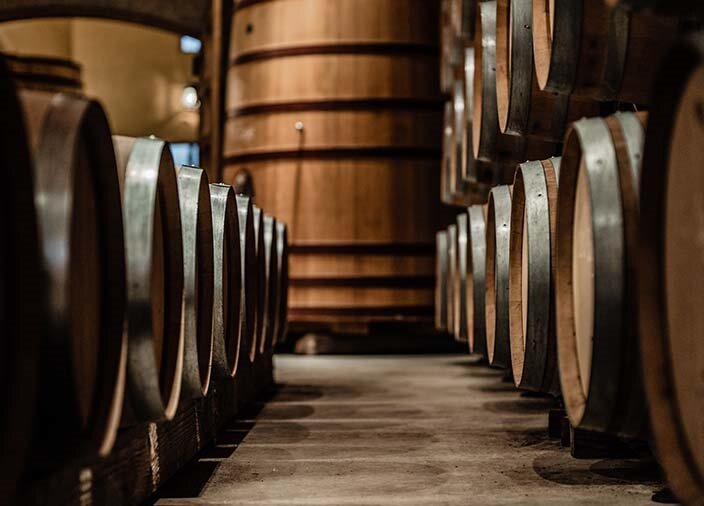
Maturation
The type of casks used, often oak previously used for aging other spirits or wines, and the length of aging, significantly influences the whisky's flavor profile. While the minimum stipulated period a Scotch whisky must be aged is three years in casks, most are aged for longer periods. As it matures in warehouses, it interacts with the wood and air; absorbing flavors from the wood and gaining color, all of which help develop complexity of flavor and aroma.
WHAT ROLE DO CASKS PLAY?
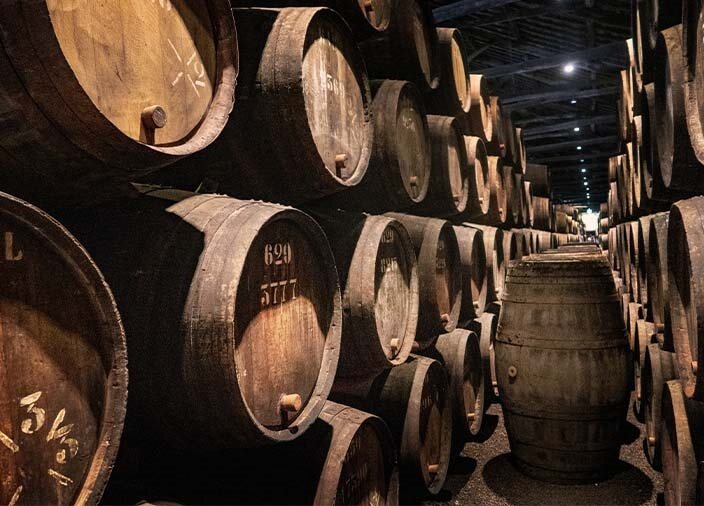
WHAT ROLE DO CASKS PLAY?
Anywhere between 30-70% of a whisky’s flavor will develop as it matures in the oak casks, because of the spirit’s interaction with the wood. Hence, the type of cask used for maturing Scotch whisky can have a significant impact on the flavor, aroma, and overall character of the final product. Different types of cask can contribute to the whisky through their wood composition and their previous contents. Some of the more common types of casks used for maturing Scotch whisky are:
Ex-Bourbon Casks
These are a staple in Scotch whisky maturation, they are American white oak casks previously used for aging bourbon whiskey. Ex-bourbon casks typically provide flavors such as vanilla, caramel, coconut, and spice.
Ex-Sherry Casks
Ex-Sherry casks, often (but not exclusively) made from European oak, are popular for their ability to add rich, fruity, and sometimes nutty flavors to the whisky.
Refill Casks
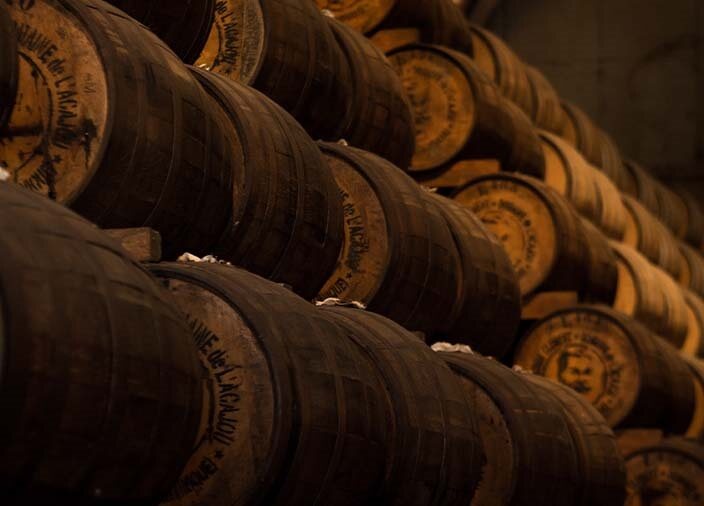
Refill Casks
These casks have been used for maturing Scotch whisky multiple times and hence are less active in flavors, resulting in a more subtle wood influence and allowing the original character of the spirit to shine. Especially useful for maturing light whiskies such as grain whisky.
Refurbished Casks
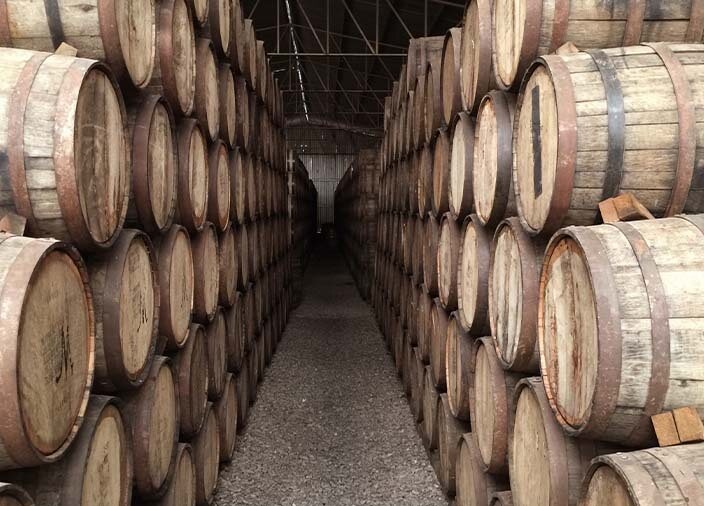
Refurbished Casks
Important especially when considering sustainability and cost-effectiveness. Refurbished casks are casks that have been previously used for maturing whisky or other spirits multiple times over an extended period. The casks are exhausted and no longer able to contribute flavors and need to undergo various processes to prepare them for re-use in the whisky industry. The casks are taken apart, cleaned, and re-charred or re-toasted to rejuvenate the interior surface.
It's important to note that many distilleries use a combination of cask types to create a diverse range of flavors and profiles. The choice of cask and its history greatly influences the final character of the whisky, making the maturation process a critical aspect of Scotch whisky production.
WHAT IS BLENDING?
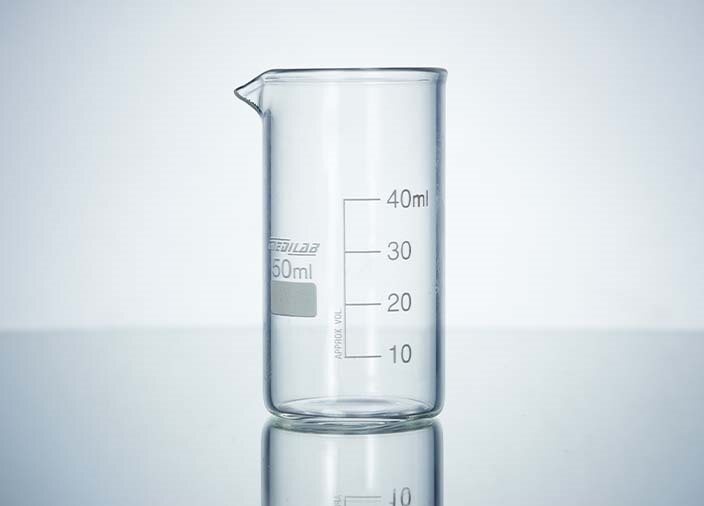
WHAT IS BLENDING?
Blending is the part of the process where art meets science and several casks are blended together to create a consistent and balanced liquid. In the case of a single malt Scotch whisky, this is when a number of casks from the same distillery are blended together. In the case of blended Scotch whisky, it is when casks from more than one Scottish distillery are blended together.
Blending is a highly skilled process that involves mixing different whiskies together to create a final product that is greater than the sum of its parts. Each individual whisky has its own flavor and character, so it is down to the knowledge, expertise and intuition of the blending team to select the right whiskies at the right age to produce a Scotch whisky that is consistently exceptional.
SCOTCH IS MADE TO BE ENJOYED IN LOTS OF DIFFERENT WAYS

SCOTCH IS MADE TO BE ENJOYED IN LOTS OF DIFFERENT WAYS
There is no right or wrong way to enjoy Scotch whisky. Some people enjoy it neat with no ice or water, but certain Scotch whiskies come alive with a dash of water, as it can help release subtle nuances in the flavor. Others prefer theirs on the rocks. Scotch whisky plays a hugely important role in cocktail culture worldwide and has done for generations, whether it’s in a classic Old Fashioned or something as simple and easy as a Scotch and soda in a Highball glass.
TYPES OF SCOTCH WHISKY

TYPES OF SCOTCH WHISKY
Single malt Scotch whisky – produced using only malted barley at a single distillery by batch distillation in pot stills. It must be bottled in Scotland.
Single grain Scotch whisky – made from unmalted grains such as wheat, or corn and small amount of malted barley at a single distillery. Often produced by continuous column distillation and used as a component in blended Scotch whisky, but there are exceptional bottled single grain expressions available in the market.
Blended Scotch whisky – a blend of one or more single malt Scotch whiskies with one or more single grain Scotch whiskies. The best example is the world’s bestselling Blended Scotch, Johnnie Walker Black Label which is a blend of more than 30 different whiskies aged for a minimum of 12 years from across the four corners of Scotland.
Blended malt Scotch whisky – a blend of single malt Scotch whiskies, which have been distilled at more than one distillery.
Blended grain Scotch whisky – a blend of single grain Scotch whiskies, which have been distilled at more than one distillery.
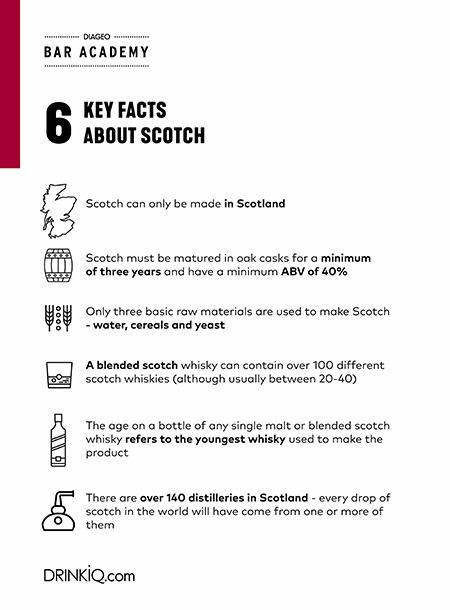
Key serves
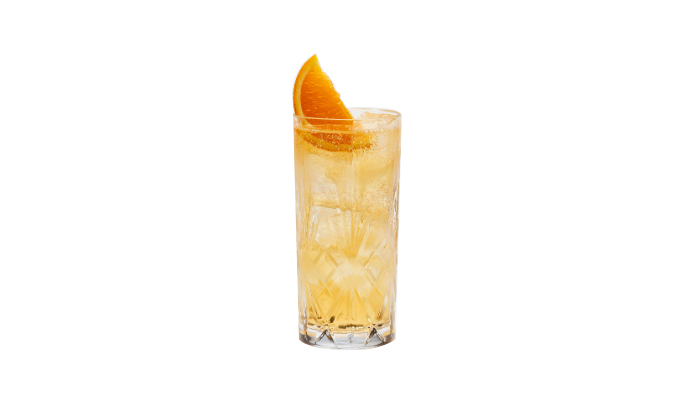
Johnnie Walker Black Label with Ginger
Experience the rich flavours of Johnnie Walker Black Label with refreshing ginger.
Skye's the limit
The Lillet Blanc and earthy Sage complement the powerful, spicy maritime flavors of Talisker Skye.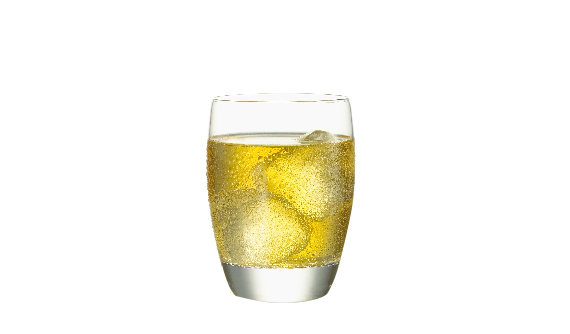
Black Label & Ginger Beer
The Striding Man's heading to the Islands! Johnnie Walker Black Label Blended Scotch Whisky and spicy Ginger Beer on the rocks...set sail for paradise!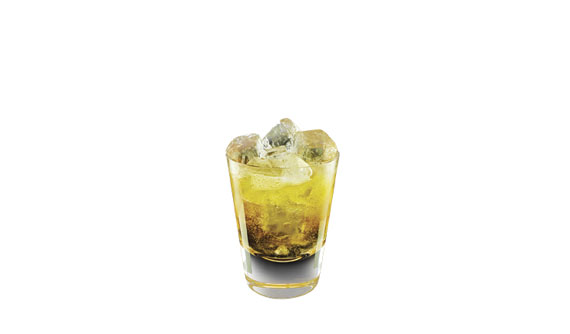
Johnnie Walker Black Label & Lemonade
Smoky, rich and citrusy - the Johnnie Walker Black Label is served with Lemonade over ice.
Related Content

Scotch Whisky Quiz
Know your way around this famous type of Whisky? Confident in your knowledge of its production and characteristics? Put what you’ve learned to practice with this Scotch Whisky quiz.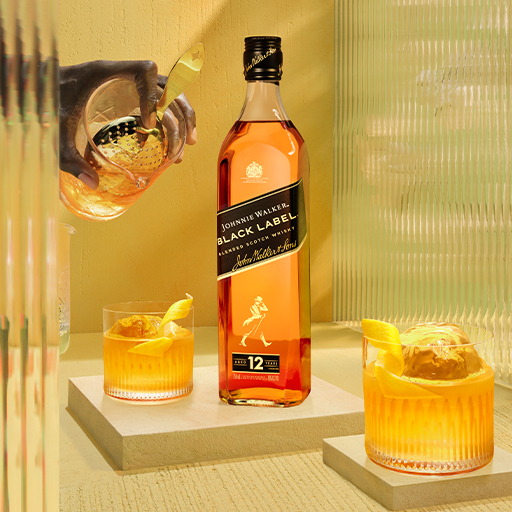
A Guide to Scotch
Scotch Whisky got you stumped? Check out our free eBook, a quick and easy way to access all the info you need on Scotch Whisky.
